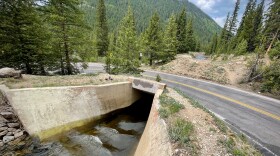-
Mounting pressure to find water to conserve has Upper Basin leaders saying the savings should come from elsewhere
-
The Marshall Fire destroyed more than 1,000 homes in Colorado, and left a smoky taste and smell in the water for months after it was extinguished. That meant an expensive fix as the town of Superior tries to improve water quality.
-
A summer deadline approaches for state leaders to agree on how to cut their water use from the Colorado River.
-
Colorado’s water shortages are not relegated to the distant future. Water supplies cannot meet current demands in many communities, and are only likely to worsen as climate change heats up and dries out the state’s cities and farms.
-
Cities and agriculture across the West put intense pressure on groundwater supplies. In some regions, there are few rules governing how and when people can pump. That’s true in rural Southern Arizona. Residents there are seeing their wells dry up as big farms move in.
-
More places around the U.S. are eyeing the practice of recycling wastewater for reuse in homes and businesses as tap water. Cities see it as a way to ensure water supplies as their populations grow and climate change intensifies droughts. In Colorado, officials are educating residents about the practice with a mobile water recycling exhibit.
-
About 80% of Colorado’s water falls on the western side of the state. But about 80% of Colorado’s people live on the east side of the mountains. Because of gravity, that water doesn’t flow to them naturally. Instead, Colorado’s heavily-populated Front Range relies on a massive plumbing system to keep drinking water flowing to its taps.
-
A group of chemicals called PFAS are common in many household items, and potentially causing health problems. Monday, the EPA included them in the draft of its latest list of water contaminants, setting the groundwork for potential regulation.
-
Another dry year has left the waterway that supplies 40 million people in the Southwest parched. A prolonged 21-year warming and drying trend is pushing the nation’s two largest reservoirs to record lows. For the first time this summer, the federal government will declare a shortage.
-
As drought strains much of the state, and tens of thousands of newcomers move to the busy Front Range each year, towns like Severance are thinking about growth – and water usage – in ways that they never have before.

Play Live Radio
Next Up:
0:00
0:00
Available On Air Stations










